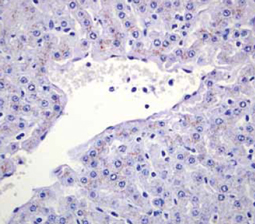Copper Accumulation in Wisconsin Holsteins

Diagnostic Pathologist
DVM, Iowa State 1981
Diplomate, A.C.V.P
By Dr. Doug Lyman DVM, DACVP
In an earlier article, clinical copper toxicity in Holstein heifers was described. It now appears that copper is accumulating in the livers of all age groups of Wisconsin Holsteins and may be causing, at the very least, subclinical liver damage. A recent review of 225 Wisconsin Veterinary Diagnostic Laboratory (WVDL) submissions, for which ICP-MS liver metals analysis was performed, revealed a mean copper across all age groups (except fetuses, which also showed some elevated levels) of 143 ppm wet weight (ww). Normal equals 25 to 100 ppm ww.
Histologic examination reveals an abundance of rhodanine-stainable copper in liver-tissue samples. Rhodanine stains only copper that is not complexed to metallothionein. The median was 130 ppm ww. Animals from 1 to 20 months actually had higher levels (173 ppm ww) than adults (145 ppm ww). The literature suggests that in species susceptible to copper accumulation and toxicity, including cattle, humans, dogs, sheep and rats, subclinical damage becomes apparent at around 150 ppm ww while the threshold for clinical toxicity occurs, with much individual variation, at levels above 250 ppm ww.
It was considered that, by virtue of prior illness, this may have represented a skewed population, so 30 liver samples were randomly collected at a cull cow slaughter plant. The samples may have included a few beef and colored dairy cows. The mean liver copper of these 30 samples was 163 ppm ww, while the median was 150 ppm ww.

The production and release of the circulating, copper-containing protein ceruloplasmin by the liver is increased during an acute-phase response, perhaps drawing down liver copper during some illnesses and potentially explaining why the WVDL submissions tended to be lower. Histologic examination revealed an abundance of rhodanine-stainable copper (see image) in many of both populations. Rhodanine stains only copper that is not complexed to metallothionein, the normal storage protein, thus suggesting that any stainable copper represents excess and is potentially detrimental. A spectrum of mild histologic lesions representing non-specific insult was present in many livers.
As something of a footnote, the United Kingdom has, over the past 10 years, encountered a serious problem with clinical copper toxicity including significant mortality in Holstein cows. This came about as a result of over supplementation (often in the range of 25-35 ppm of the total diet) due to concerns about molybdenum interference with copper absorption. A large (n = 2250) survey of adult Holsteins revealed a mean liver copper of 130 ppm ww. It was also found that liver damage, as determined by elevated serum levels of the leakage enzyme glutamate dehydrogenase, began at around 150 ppm ww and that these levels dropped as copper was withdrawn from the diet.
Similar histologic lesions were also documented. One of their, albeit unsubstantiated, suggestions was that black and white cows (to include Friesians) may be genetically increasing in susceptibility to copper accumulation. Is this a possible explanation for the high levels we’ve seen in young Holsteins? Perhaps the situation is not unlike that in dogs wherein an increasing number of breeds appear to be prone to copper accumulation though, in some, the question of cause or effect remains to be sorted out. Or is copper being overfed here also? Do chelated or proteinated supplements contribute? Are levels going up in home-raised feeds and forages as a result of all the copper sulfate entering the system on many farms? Could it be a combination of all the above?